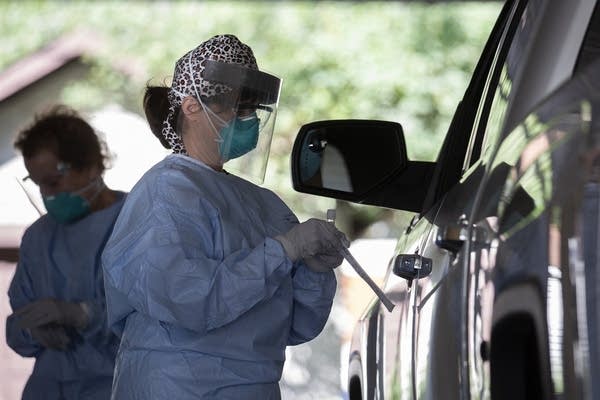Several types of COVID tests are available in Minnesota. Here’s what you need to know.

Nurse Lynn Eidahl administers a nasal swab at a free drive-thru COVID-19 testing site at Incarnation-Sagrado Corazon Catholic church in Minneapolis in August. The community testing event was focused on reaching the Latino communities and had Spanish-speaking interpreters on site.
Christine T. Nguyen | MPR News file
Go Deeper.
Create an account or log in to save stories.
Like this?
Thanks for liking this story! We have added it to a list of your favorite stories.


